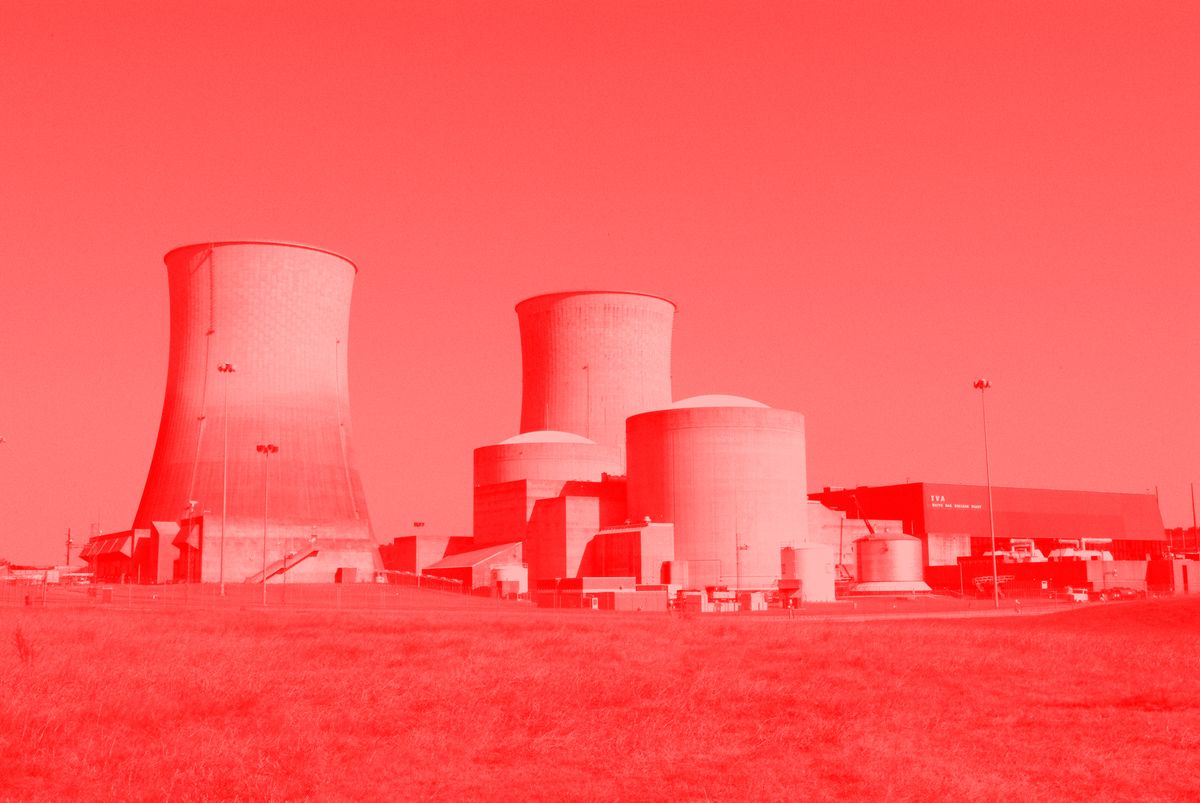Big Public Power from the Atom
Big public power in the last century applied the elemental potential of water toward social ends. The big public power of tomorrow should revolve around the elemental potential of the atom.

Editor's note: Damage Issue 1: Building Big Things features multiple "Then" and "Now" vignettes. This article is one of the latter; its companion, "Big Public Power from the River," can be found here.
For more than a century, developmental states have harnessed the hydroelectric potential of powerful rivers with the same dams they used to control floods and provide water for irrigation. If big public power in the last century applied that elemental potential of water toward social ends, then, with climate change on the mind, it can apply the elemental potential of the atom toward new water crises of our century.
Green New Deal proponents typically imagine vast arrays of solar panels and wind turbines, not nuclear reactors. Capitalists and their liberalized power markets have expressed largely the same preference. But clean, abundant nuclear energy could provide the key input of tomorrow’s national programs of social, industrial, and ecological renewal all across the country, in spite of what commodities the markets will value.
The impact of climate change on water resources in the Southwestern United States presents a social crisis on par with the destructive flooding of the Tennessee River. Drought, floods, and overdrafted groundwater basins pose new challenges for water security in California and surrounding states. Meanwhile, demand for water increases as populations expand, leaving largely public water resources stretched and turned into new commodities for so-called “water brokers.”
Water profiteering isn’t preordained. Technology has long existed to create freshwater from seawater, called desalination, and is employed across the globe and in the United States. Desalination, however, consumes massive amounts of energy, and the global task of decarbonization necessitates that such energy be carbon-free. The largest desalination facility in the United States, finished in 2015, provides up to 10% of San Diego’s regional water needs. But it’s private, not public infrastructure. Shareholders skim profits off the facility’s 30-year water supply contract with San Diego and, by consuming power from the grid, its price fluctuates with that of electricity, and therefore natural gas.
The developmental state of tomorrow should instead build and operate its own coastal fleet of desalination facilities powered by on-site small, modular nuclear reactors. This desalination would be carbon-free, isolated from volatile gas markets, and aimed at preferential water prices for public customers like municipalities. Surplus power could be sold as well, with similar preference, via the federal Power Marketing Administrations in the area.
After a massive construction undertaking, a national desalination program would employ a hundred or so skilled industrial workers at each such facility. Mechanical engineers, hydraulic engineers, pipefitters, boilermakers, water control operators, nuclear operators, and all manners of technicians would be joined by hydrologists, marine biologists, and geologists in their public mission. Many of these workers would be prepared at trade schools; others at regional public colleges and universities that were chosen, over Stanford, to develop curricula and certifications for it. Their work is no mere paycheck: they’re providing water for their community’s basins, canals, pools, homes, schools, factories, and farmlands as part of a national program pitting human ingenuity against the reality of a changing climate.
A program like this demands immense clean energy, and rather than procuring it from markets, the state should produce that energy directly. That requires a dramatic build-up of state capacity in power generation and small, modular nuclear operations. Thankfully, that capacity exists today in the very same Tennessee Valley Authority that kicked off big public power last century. TVA is one of the only entities in the United States to be actively preparing for advanced nuclear technology. “I have no interest in building one reactor,” TVA’s chief executive said earlier this year. “TVA needs something on the order of 20 reactors” to completely decarbonize by 2050.
The pastoral Green New Deal visions of vast wind and solar installations, even if publicly owned, would necessitate similarly vast tracts of land, much of which would need to be acquired or rented from various landowners. And to many, it would be an unambitious vision of state capacity limited to technology that the private sector has been leading for decades, and that comes and goes with the weather. The big public power of tomorrow should instead revolve around the elemental potential of the atom.
■
Matt Huber is a professor in the Department of Geography and the Environment at Syracuse University. He is the author of Climate Change as Class War: Building Socialism on a Warming Planet.
Fred Stafford is a STEM professional and independent researcher on the Left.



